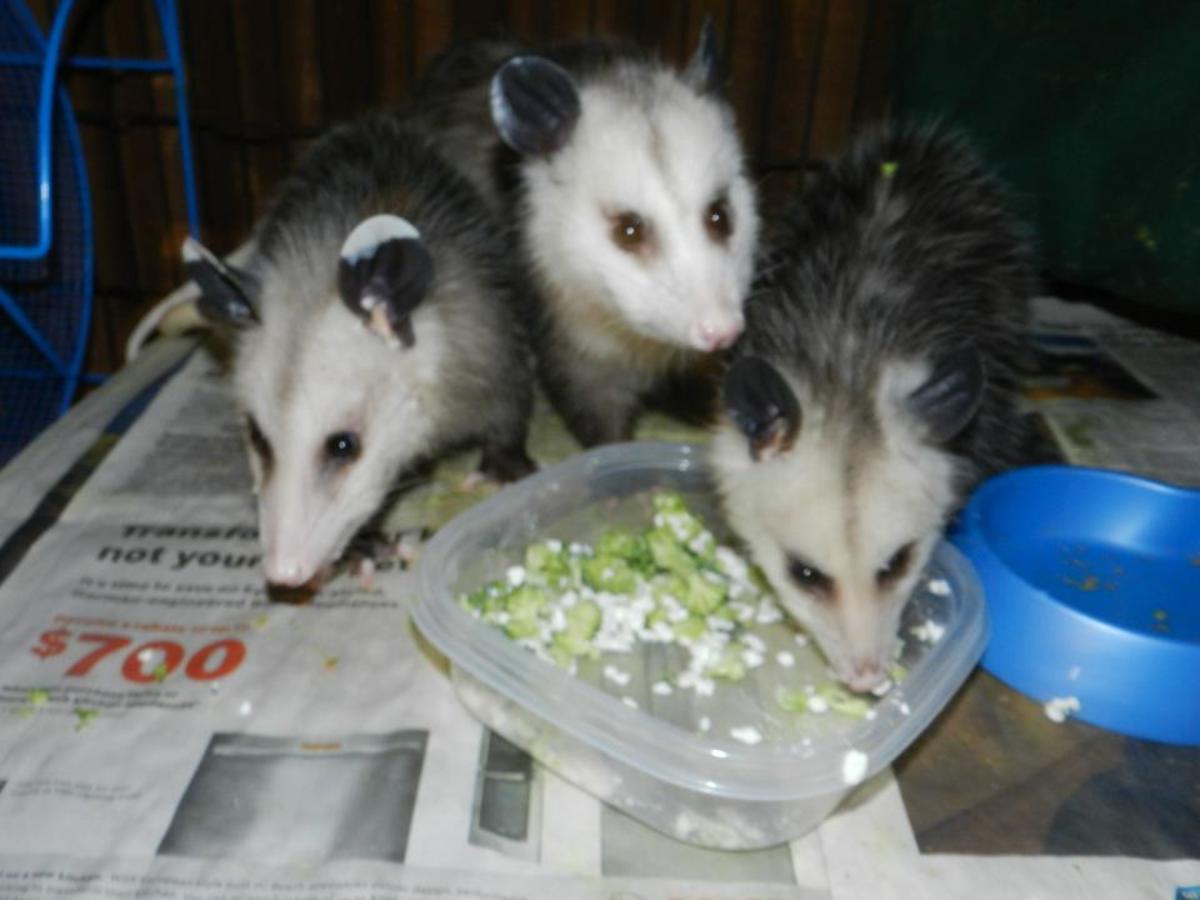
A Comprehensive Guide to Caring for a Baby Possum
Introduction
Baby possums, also known as joeys, are adorable and helpless creatures that require specialized care to thrive. If you have found a baby possum in need, it is crucial to provide immediate assistance to ensure its survival. This comprehensive guide will provide you with detailed instructions on how to care for a baby possum, from feeding and housing to health monitoring and socialization.
1. Assessment and Initial Care
a. Safety First:
- Wear gloves when handling the baby possum to avoid potential bites or scratches.
- If the possum is injured or in distress, contact a licensed wildlife rehabilitator immediately.
b. Determining Age and Condition:
- Estimate the possum’s age based on its size and development.
- Check for any visible injuries, such as cuts, bruises, or broken bones.
- Observe the possum’s behavior for signs of distress, such as lethargy, difficulty breathing, or excessive crying.
c. Temperature Regulation:
- Baby possums are highly susceptible to hypothermia.
- Wrap the possum in a warm towel or blanket and place it in a warm, draft-free environment.
- Use a heating pad set to low to provide additional warmth, but avoid direct contact with the possum.
2. Feeding
a. Formula:
- Feed the baby possum a specialized formula designed for marsupials.
- Follow the manufacturer’s instructions carefully for mixing and feeding.
- Use a syringe or bottle with a nipple specifically designed for possums.
b. Feeding Schedule:
- Feed the possum every 2-3 hours during the day and every 4-6 hours at night.
- The amount of formula to feed depends on the possum’s age and size.
- Gradually increase the amount of formula as the possum grows.
c. Burping:
- After each feeding, gently burp the possum by holding it upright and patting its back.
- Burping helps prevent gas and discomfort.
3. Housing
a. Enclosure:
- Provide the baby possum with a small, enclosed space, such as a cardboard box or a plastic tub.
- Line the enclosure with soft bedding, such as fleece or towels.
- Keep the enclosure clean and dry.
b. Temperature Control:
- Maintain a temperature of 85-90°F (29-32°C) in the enclosure.
- Use a heating pad or a warm water bottle to provide additional warmth.
- Monitor the temperature regularly to ensure it is within the optimal range.
c. Humidity:
- Provide a humid environment by placing a damp towel or a humidifier in the enclosure.
- Humidity helps prevent the possum’s skin from drying out.
4. Health Monitoring
a. Daily Check-Ups:
- Check the possum’s overall health daily, including its eyes, ears, nose, and mouth.
- Monitor its weight and growth regularly.
- Observe its behavior for any changes or signs of illness.
b. Common Health Issues:
- Diarrhea: Caused by improper feeding or infection.
- Respiratory infections: Characterized by sneezing, coughing, and difficulty breathing.
- Parasites: Can cause weight loss, anemia, and other health problems.
c. Veterinary Care:
- If you suspect the possum is ill, contact a licensed wildlife rehabilitator or veterinarian immediately.
- Do not attempt to treat the possum yourself.
5. Socialization
a. Handling:
- Handle the baby possum gently and frequently to socialize it.
- Talk to it softly and avoid making sudden movements.
- Gradually increase the duration and frequency of handling as the possum grows.
b. Playtime:
- Provide the possum with toys and activities to stimulate its physical and mental development.
- Supervise playtime to ensure the possum is safe.
c. Bonding:
- Spend time with the possum and provide it with comfort and affection.
- This helps build a bond between you and the possum.
6. Release
a. Age and Development:
- Release the possum back into the wild when it is fully grown and has developed the necessary survival skills.
- This typically occurs around 4-6 months of age.
b. Location:
- Release the possum in a suitable habitat, such as a wooded area with access to water and food.
- Avoid releasing the possum in areas with high human activity or predators.
c. Soft Release:
- Consider a soft release, where you gradually introduce the possum to the wild by providing food and shelter for a period of time.
- This helps the possum adapt to its new environment.
Conclusion
Caring for a baby possum is a rewarding experience that requires patience, dedication, and specialized knowledge. By following the guidelines outlined in this comprehensive guide, you can provide the necessary care to ensure the possum’s survival and well-being. Remember to always prioritize the possum’s health and safety, and seek professional assistance when needed. By providing a nurturing environment and proper care, you can help this helpless creature thrive and return to its natural habitat.
